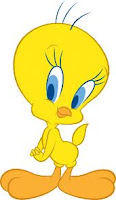After quite ordinary weather all of yesterday, things started to improve around sunset - first we were treated to a black eagle flyby & then the sky cleared up :) The seeing was also better than we've had up here in a long time & so it was that IQ's last night turned out to be a particularly memorable one...
It was cool too having Paul learning the ropes - seen here receiving the SALT Astronomer Force from The Master, Petri!
But the highlight of the night, & indeed the culmination of the enormous IQ effort, was obtaining this magnificent image (with a freshly stacked primary mirror & great seeing) - stars with full width half maxima of 1.1 arcseconds over the entire field of view!!
We were ready to celebrate with the images obtained the night before, but it was a great privilege to be able to see what the telescope's capable of in good seeing - truly a fairytale end to the IQ campaign!
The big bottle has joined the collection that's marked previous milestones in SALT's life & there will no doubt be more to follow as we edge closer to full science operations over the next 6 months :)
All packed up & ready to go home, Darragh was readily coerced into leaving a note on the front door for the Tech Ops Team that'll be in first thing tomorrow morning...
A picture that's worth a thousand words/hours/days! & for those who want more of the gory details, see Darragh's latest IQ report to the SALT Board.
We'll be back in about a month or so to throw the party to end all parties! In the meantime, good luck with the rest of the work guys - it's been an *Absolute Blast* working with you all, it's with heavy hearts that we leave you & this very special place...























































